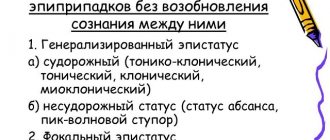Anonymously
Around the clock
Attention! The material contains information about substances, the use of which can cause serious harm to your health!
Toxic addiction most often occurs in children and adolescents who do not have access to drugs. This problem does not lose its relevance to this day. Parents should be aware of the signs and consequences of substance abuse in order to provide timely help to their children and prevent further development of drug addiction.
- What is childhood substance abuse?
- The influence of toxic substances on the teenager's body
- Main reasons for development
- Signs of substance abuse in teenagers
- Prevention of substance abuse among adolescents
- Talking to teenagers about substance abuse
- Types of childhood substance abuse
- FAQ
- Treatment of substance abuse in adolescents
- Help from a psychologist
- Ambulatory treatment
- Rehabilitation of addicted teenagers
Treatment prices:
| Service | Price, rub) |
| Types of therapies | |
| Standard detoxification therapy | 3 500 ₽ |
| Double Detox Therapy | 6 000 ₽ |
| Enhanced Detoxification Therapy | 7 500 ₽ |
| Maximum detoxification therapy | 9 500 ₽ |
| Quick sobering up at home | 7 500 ₽ |
| Hospital at home 1 day | 22 000 ₽ |
| Advanced hospitalization | 15 000 ₽ |
| Treatment in hospital | |
| Accommodation | |
| Economy chamber (6 beds) | 2 000 ₽ |
| Standard room (4 beds) | 3 000 ₽ |
| Increased comfort (2 seater) | 5 500 ₽ |
| VIP chamber (1 person) | 12 500 ₽ |
| Individual post 24/7 | 5 000 ₽ |
| Medical and social rehabilitation 21 days | 140 000 ₽ |
| Service | Price, rub) |
| Initial consultation with a narcologist | for free |
| Consultation with a psychologist | 3 000 ₽ |
| Psychiatrist consultation | 5 000 ₽ |
| Coding at home Torpedo | 7 500 ₽ |
| Express output and encoding (doublet) | 13 500 ₽ |
| Coding using the Dovzhenko method | 12 000 ₽ |
| Hypnosis classic session | 13 000 ₽ |
| Ericksonian hypnosis session (NLP) | 8 000 ₽ |
| Coding method Torpedo | 5 500 ₽ |
| Double block | 8 000 ₽ |
| Esperal injection for 1 year | 9 900 ₽ |
| Tetlong for 3 months | 10 500 ₽ |
| Esperal gel for 1 year | 15 000 ₽ |
| Selincro course of therapy | 12 500 ₽ |
| Implantation of Disulfiram for 1 year | 18 000 ₽ |
| Vivitrol injection for 1 month | 26 000 ₽ |
| Naltrexone stitching for 3 months | 35 000 ₽ |
| Neuroimplantation Prodetoxon for 6 months | 47 500 ₽ |
| Narcopsychotherapy session | 50 000 ₽ |
| Neutralization of encoding | specify |
| Psychodiagnostics / pathological diagnostics | 7 500 ₽ |
| Psychotherapy session | 5 000 ₽ |
| Family psychotherapy | 6 000 ₽ |
| Outpatient rehabilitation in Moscow | 33 000 ₽ |
Expand
We will select an individual treatment plan
Free consultation 8-800-200-27-23
Signs of a typical drug addict
There are several traits that are common to almost every drug addict:
- Unproductive and monotonous activity, lethargy, which is replaced by psychomotor agitation;
- Disturbances in appetite and sleep patterns;
- Talkativeness or withdrawal;
- Chaotic sexual relationships;
- Quick spending of newly received funds;
- Emotional instability.
These symptoms are not the main way to determine drug addiction: most often they only complement the overall picture.
What is childhood substance abuse?
Substance abuse is a type of drug addiction in which there is a craving for the use of chemical substances that are not narcotic. Substance abusers inhale vapors of chemical substances and use medications to obtain an intoxicating effect. Often children and adolescents resort to the following acts of substance abuse:
- They sniff acetone, Domestos, whiteness, solvents and other chemicals with a pungent odor;
- They inhale gas from lighters, gasoline, dichlorvos, varnishes and adhesives;
- Use medications for recreational purposes.
As a result of the constant intake of chemicals into the body, chronic intoxication is observed, which interferes with the normal development of the brain and internal organs.
What do substance abusers use?
Most often, substance abusers, due to lack of funds, use easily accessible household products, such as:
Petrol. Euphoria occurs within 10 minutes and can last up to 5 days. The acute phase lasts about half an hour, and then the person is in prostration for up to 5 days. And if pleasant sensations arise at first, then the person suffers from a terrible headache and loss of appetite.
Glue. Euphoria gives way to hallucinations. There is a high probability of suffocation, because drug addicts put a plastic bag over their heads.
Acetone. In addition to euphoria, acetone vapor causes an increase in sexual desire. There is no sense of time and space. After the session, fatigue, irritability, vomiting and nausea occur.
Solvents. Their use causes a feeling of lightness, which is then replaced by vomiting and headache.
The influence of toxic substances on the teenager's body
Substance abuse is a serious problem for thousands of families across the country. A teenager who is addicted to the use of toxic substances dooms himself to the development of serious illnesses, disability and even death.
Childhood and adolescence are the most important period in the life of every person, since it is during this period that internal organs are formed, mental health and moral values are stabilized. Substance abuse leads to the following consequences:
- Development of severe pathologies of the central nervous system: epilepsy, acquired mental retardation, neuralgia;
- Severe toxic damage to the kidneys and liver;
- Structural and functional disorders of the cardiovascular system: development of malformations, thrombosis, thromboembolism, heart attack, stroke, sudden cardiac arrest;
- Development of pneumonia, bronchitis, pneumothorax, burns of the respiratory tract due to sniffing (inhalation of household gas);
- Severe mental illnesses such as schizophrenia, depersonalization, manic-depressive psychosis, and so on.
Remote
With prolonged use of toxic gases, the following develops:
- lung diseases - from chronic runny nose, pharyngitis to lung cancer;
- the bone marrow is affected, which leads to leukemia and a sharp weakening of the immune system;
- the liver is destroyed - cirrhosis is a common cause of death for substance abusers;
- toxic encephalopathy of the brain is observed.
Lighter gas addicts often become victims of accidents at home, on the roadway. It is not uncommon among them to die from suffocation due to blockage of the respiratory tract with vomit, pulmonary edema in response to the penetration of lighter gas vapors into the bronchi and alveoli.
Main reasons for development
Often, substance abuse develops in children and adolescents who join dysfunctional companies. Often teenagers look for support in street groups; the use of narcotic and toxic things becomes an integral part of gaining respect among new friends. In addition to an interest in everything forbidden, a child may be driven to such actions by a feeling of alienation, uselessness, or suffering from physical, psychological and sexual violence.
Possibility of addiction
Substance abuse can also provoke the development of addiction. However, it does not occur in everyone: much depends on the individual characteristics of the human body. Thus, in some people, euphoria is manifested by increased psychomotor functions. But in some individuals, the use of volatile drugs provokes the appearance of symptoms of general intoxication - nausea, vomiting, headache.
Thus, it is the first category of people who are more susceptible to substance abuse as such. Since the pleasant, relaxing and cheerful euphoria makes them want to take a second dose of the drug, addiction develops. At the same time, as doctors note, the drug addict develops intolerance to alcoholic beverages.
Signs of substance abuse in teenagers
The use of toxic substances and drugs during adolescence causes changes in the appearance of the teenager. The following signs of substance abuse are identified:
- General redness of the skin, paleness of the nasolabial triangle;
- Pupil dilation;
- Uncertain gait, unreasonable laughter during the period of toxic intoxication;
- The appearance of ulcers, scars and scratching on the skin (scratching during tactile hallucinations);
- “Glassing” of the view;
- Dramatic weight loss;
- Instability of the emotional background, outbursts of aggression;
- Craving for loneliness, constant running away from home.
Workbooks
How addiction develops
Getting used to it happens quite quickly. 2-3 times are enough for a person to begin to feel the need to repeat new sensations. At the same time, there is a tendency to forget unpleasant sensations, and the desire to feel euphoria comes to the fore. However, this is how psychological dependence manifests itself; it is only the first step. After just 1-2 months, a physical one is added to it - the integration of the substances used into the normal physiological processes of the body.
At this stage, the frequency of receptions also increases. And if at first, 2-3 doses per week are enough for a drug addict, then the need becomes daily, and then increases and reaches a regular dose every 1-2 hours.
If the drug does not enter the body within 30 minutes to an hour after administration, withdrawal syndrome (withdrawal) appears. As a result, it comes to the need to consume toxic vapors immediately after the previous dose. If the addict is isolated from the drug or decides to stop taking it, this condition will continue for about five more days.
Prevention of substance abuse among adolescents
The main way to prevent substance abuse among children and adolescents is to create a healthy environment. Parents who have warm, trusting relationships with their children rarely encounter such a problem.
Educational institutions often hold lectures on the dangers of drugs, alcohol and toxic substances. Such conversations can be carried out at home, but they require establishing good contact with the child. If it is impossible to independently build quality communication, it is recommended to contact a family psychologist.
Find out treatment recommendations without leaving home for free
To select a treatment plan, you just need to leave a request, we will contact you to select the time and specialist you need
Submit your application
Ust-Labinsk Central District Hospital
Published: 08/02/2019, 15:38
Drug addiction is a chronic progressive disease caused by the use of drug substances, characterized by a phase course and the presence in its structure of several stage-by-stage developing syndromes.
In everyday life and in legal practice, the concept of drug addiction includes any use of prohibited psychoactive substances, including non-addictive substances (for example, marijuana or LSD). At the same time, the use of alcohol and tobacco is usually not considered drug addiction, since it is not prohibited, although they are also drugs, and they cause great harm and addiction.
The term “ substance abuse ” is also used - usually this means dependence on substances that are not classified as drugs by law. These are various chemical, biological and medicinal substances that cause addiction and dependence.
The following groups of narcotic and toxic substances are distinguished:
- morphine, opium and their semi-synthetic and synthetic analogues (heroin, codeine, promedol).
- cocaine and drugs made from it (“crack”).
- substances extracted from Indian hemp (hashish, anasha, plan, marijuana).
- sleeping pills (barbiturates, noxiron, bromural).
- stimulants (caffeine, ephedrine, doping).
- tranquilizers.
- atropine and atropine-containing drugs (asthmatol, belladonna).
- non-narcotic analgesics (analgin, amidopyrine, aspirin, paracetamol, etc.).
- organic solvents and household chemicals.
- nicotine.
Until the end of the 19th century, drug addiction was not considered a serious international medical problem. Only at the beginning of the 20th century, with the development of technological progress and the beginning of laboratory production of opium and cocaine alkaloids, drug addiction became epidemic. Drug use is a widespread phenomenon. It occurs in men and women, in all ethical and social groups. The development of transport, open borders, and international trade have reduced the distance between countries and peoples, which also contributed to the spread of drug addiction.
Drug addiction primarily affects the lower strata of society. Children from low-income, drinking families, unsupervised by their parents, begin to drink alcoholic beverages at an early age, sniff gasoline, Moment and Rubber glue, then switch to marijuana, poppy straw, and “indulge” in parkopan and ketamine. Then they try hard drugs, such as screw. And if for them this is a way to escape from the “dirty” reality around them, then the offspring of rich parents begin to take drugs for the sake of “coolness”. Oddly enough, for them the lower stratum is a kind of personification of freedom and impunity, and they envy it in their own way. The rich start with parkopan, anasha, ecstasy, then move on to heroin and cocaine.
Causes
Modern scientists are developing in sufficient detail explanations for the emergence of drug addiction and identify 3 main directions, 3 groups of drug addiction factors: sociological, including the influence of society and family, biological, explaining the tendency to abuse the characteristics of the body and a special predisposition, and psychological (or mental), considering characteristics and deviations. in the psyche.
Substance abuse
Substance abuse is a disease caused by chronic use of psychoactive substances, characterized by the development of mental and, in some cases, physical dependence, changes in tolerance to the substance consumed, mental and somatic disorders, and personality changes. A drug addict – a “sniffer” – is someone who intoxicates himself with so-called “volatile narcotic substances” (or VDU). Volatile substances are found in various chemical and technical preparations, such as paint thinners, gasoline, trichlorethylene, acetone, flammable gas in cylinders and lighter gas. Substance abuse is associated with chronic or periodic poisoning, the effect of which on the body is very significant.
Consequences of drug addiction and substance abuse
The physical health consequences of substance abuse may include:
- respiratory tract burns;
- cirrhosis of the liver;
- lungs' cancer;
- lung abscess and its complications - pulmonary hemorrhages, degeneration of lung tissue, degeneration of the structure of internal organs;
- pathology of cardiac activity - heart attack, hypertension, heart defects;
- benign and malignant kidney tumors;
- inflammation of the mucous membrane of the stomach and intestines.
The physical consequences of substance abuse are irreversible! Even in the case of complete recovery from addiction, the patient develops persistent disturbances in brain activity and becomes mentally disabled
The consequences of drug addiction are destruction of liver cells.
- Hepatitis, hepatosis, cirrhosis and liver cancer are common diagnoses for drug addicts;
- premature aging. This affects not only the work and condition of internal organs, but also the appearance of drug addicts;
- The hormonal background of the drug addict suffers greatly. Reproductive health is incompatible with drug addiction: even young people face sexual impotence and problems conceiving;
- there is a pronounced rapid social and moral degradation of man. He forgets about standards of behavior, he does not care about appearance and basic politeness. A drug addict may behave inappropriately and even aggressively;
- the adequacy of perception of reality is impaired. While in a state of drug intoxication, a person can commit a crime, make a mistake with the dosage of the drug, or even commit suicide. He is not aware of his own actions and can be dangerous;
- drugs completely destroy the personality, leading to psychosis, dementia and disability.
Prevention of drug addiction and substance abuse.
The fight against drug addiction is carried out, first of all, at the legislative level: strict criminal penalties are provided for the production, transportation and distribution of a number of narcotic drugs.
Prevention of these diseases includes a large set of measures to prevent people from becoming involved in drug use. Widespread promotion of a healthy lifestyle is of great importance. The most accessible way to prevent drug addiction and substance abuse by creating a negative attitude towards drug use among the younger generation is in educational institutions. As part of the activities, children and adolescents independently form opinions about drugs, focusing on the information provided to them about their destructive effects. Parents also shape their children's understanding of the norms, values, and dangers of life. Feature films and documentaries on this topic make a great impression on older children. Do not forget that the personal example of teachers and family members, demonstrating a healthy lifestyle without alcohol, cigarettes and drugs, a critical attitude and condemnation of addictions is one of the most effective measures to prevent drug addiction and substance abuse in the younger generation
Talking to teenagers about substance abuse
Conversations about the dangers of substance abuse are a frequent accompaniment of lectures at school, college, college and other educational institutions. Often people who have managed to cope with addiction are invited to such lectures. Former residents of drug treatment centers share with children their experience of overcoming addiction and form a correct understanding of the dangers of substance abuse in students.
Treatment of toxic addiction
It is dealt with by a narcologist. It includes:
- avoiding the use of poisons;
- elimination of withdrawal symptoms;
- restoration of damaged organs and systems;
- work with mental dependence.
At first, inpatient treatment is recommended. It allows you to isolate the patient from their usual environment, prevents the possibility of use, eliminates intoxication, and helps to more easily survive the consequences of withdrawal.
Additionally, the doctor may prescribe a complex of vitamins in injections, medications to support the liver, heart, and medications to correct mental disorders.
After discharge, the patient awaits a long course of work with a psychotherapist and monitoring by a narcologist. The rehabilitation course is long, because the harm of substance abuse on the development of the body and psyche (especially when it comes to minor patients) is enormous. Parents need to keep the situation under control and follow all recommendations of specialists.
Types of childhood substance abuse
There are several types of child and adolescent substance abuse:
- Caffeineism - craving for caffeine-containing drinks and products;
- Barbitusrism is the systematic use of barbiturates in order to obtain “kumar”;
- Chloralism is the inhalation of chlorinated solvents and cleaning products;
- Craving for the use of household gas;
- Inhalation of gasoline vapors;
- Muscarinism, which involves the use of dried fly agarics.
Regardless of the exact type of substance abuse, it causes enormous harm to the health of a teenager and requires timely treatment.
- The child is a substance abuser.
What to do? If you suspect that a child is using toxic substances, you should have a calm conversation about the possible problem. If a teenager breaks down and avoids this topic, a narcologist should be called to his home to conduct an intervention. A specialist (narcology psychiatrist or social worker) will find a common language with the teenager, help him recognize the problem and create motivation for further treatment. - The child smells everything.
Why? There are times when parents notice strange behavior of a child: he tries to sniff bottles with white, gasoline, acetone and other substances. Such a gesture may quite rightly alarm a parent. If you have any suspicions, call a specialist for intervention. - Is it possible to get rid of substance abuse on your own?
Self-treatment of substance abuse is impossible. In order to efficiently work through all aspects of addiction, provide psychological support, quality detoxification and pharmacotherapy, you need to contact a drug treatment center. Here are the most ineffective methods of home “treatment”:- The use of herbal decoctions;
- Appeal to conspirators and healers;
- Focusing exclusively on begging for relief from addiction;
- Attempts to appeal to the teenager’s conscience, manipulation and hysteria.
FAQ
We have compiled a database of frequently asked questions and answers to them. Read, maybe you will find the answer to your question
These methods only trigger the problem and do not help in any way to get rid of it.
A teenager inhales chemical vapors in order to obtain an intoxicating state. This helps him to protect himself from the traumatic reality and get into the world of “cartoons”. Treatment of such addiction must be carried out urgently, with the participation of qualified and experienced specialists.
How does substance abuse affect the human body and his life?
An adult who uses inhaled toxins, just like a teenager, quickly develops addiction. Constant poisoning leads to a decline in performance and a transition to an asocial lifestyle. Most lovers of “artificial highs” are unemployed, many do not have a permanent place of residence. Their main income is theft, begging, collection and delivery of recyclable materials.
A characteristic feature of substance abusers is the intake of volatile substances in groups, which forms a certain society and lifestyle around them, and aggravates toxic dependence. Changes in character are also clearly visible: constant aggressiveness, irritability, conflict are observed, the level of empathy and self-criticism decreases. A person rapidly moves away from generally accepted norms of life and behavior, and subsequently becomes involved either in an asocial lifestyle, or in a criminogenic environment, or acquires severe chronic mental illness.
Literature
- Drug addiction, substance abuse, poisoning. Litvitsky Pyotr Frantsevich (2014);
- Substance abuse in childhood and adolescence. M.S. Zhurunova, Z.S. Abisheva, T.K. Raisov, U.B. Iskakova, G.K. Asan (2016);
- Medical and social consequences of drug addiction and substance abuse. Beletskaya A. A. (2013);
- Current issues in preventing childhood substance abuse. Rudenko Anastasia Nikolaevna, Zavyalova Natalya Yurievna (2015);
- Consumption of drugs, psychotropic substances, substance abuse, alcoholism and tobacco smoking - a social and state disaster, its analysis and ways to overcome it. Slepyan E.I. (2016).
Article verified by an expert
Terekhova Anna Vladimirovna
psychologist-consultant on socio-psychological work with addicted clients and their families. More than 10 years of experience.
Similar articles:
How removing loved ones from a drug addict and alcoholic helps him begin treatment
What is LAUGHING GAS?
Snus: what is it, the effect and consequences of the drug
Opium: what is it, signs of use
Spice: what is it, the effect and consequences of use
Stages of intoxication
In substance abuse, intoxication goes through 3 stages:
- First. Characterized by symptoms similar to those of alcohol intoxication. In this case, it is easy to awaken a person who has inhaled a volatile substance, since his consciousness is narrowed, but not yet darkened.
- Second. A person feels lightness, fun and joy. He appears in a good-natured mood and wants to sing and dance. Everything around him is perceived as an illusion, colors look brighter, sounds are heard louder.
- Third. It occurs after repeated inhalation of a volatile substance and is called the “cartoons” phase. A person experiences hallucinations - bright and moving, which seem to be projected from within into the outside world. They cannot be stopped; they are accompanied by distortion of sounds and the audibility of something that is not really there.
When leaving the third phase of intoxication, a person feels weakness, lethargy and apathy. Cognitive functions are impaired and attention is distracted. When inhaling high doses of the drug, nausea and vomiting may occur.
Social portrait
Experts have identified several features of the social portrait of a drug addict. Often this group of people includes:
- Men under 39 years of age, unmarried, living with their parents;
- Complete secondary or vocational education;
- People who do not have official employment most often become drug addicts.
According to statistics, drug addicts often come from families with an unfavorable psychological climate. A low standard of living, lack of proper upbringing, and connections with bad companies lead to substance abuse at an early age, which develops into the use of hard drugs.










